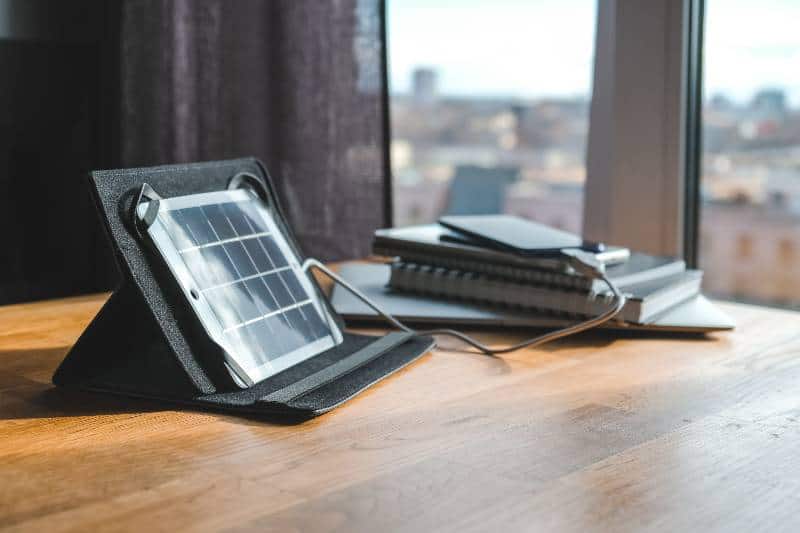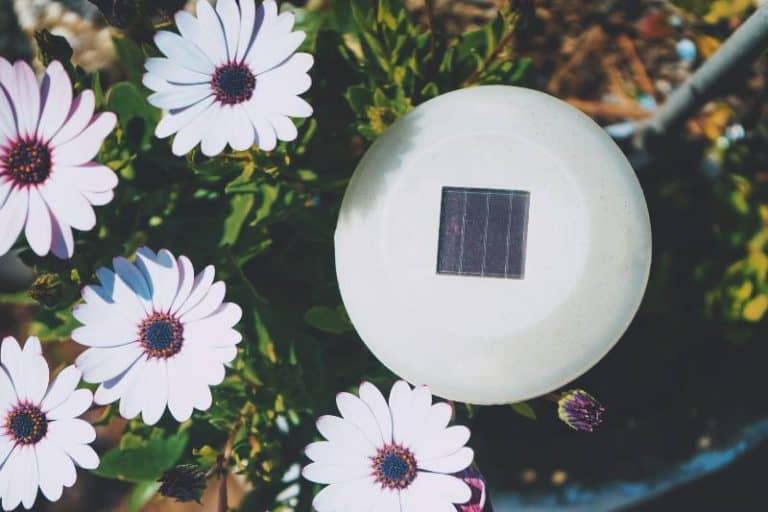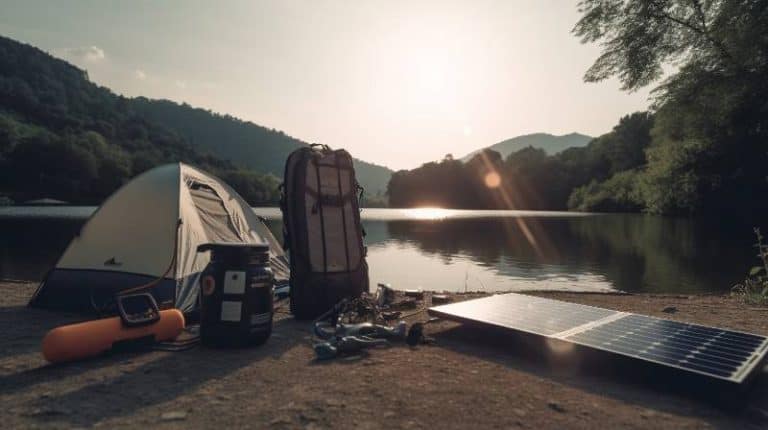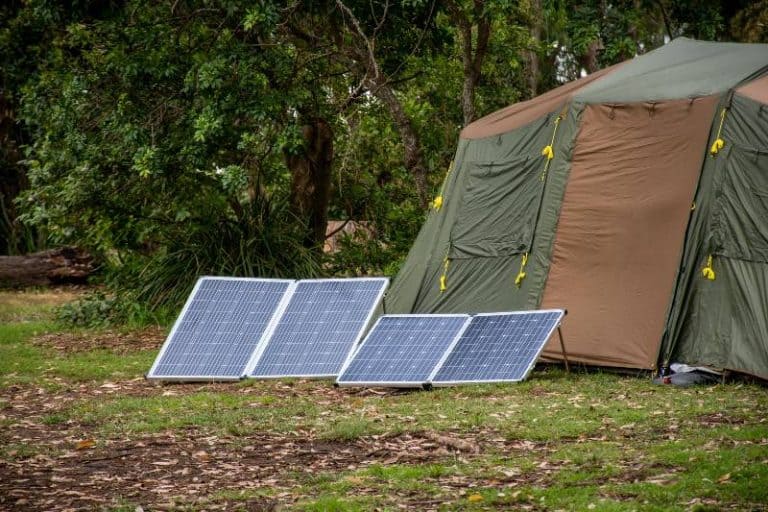Sunny Solutions: The Lowdown on Solar Backup Batteries
Are you considering investing in a solar backup battery system? If so, you’ve come to the right place! Solar energy is quickly gaining traction as an affordable and eco-friendly way to power homes and businesses. The advances in technology have drastically improved the efficiency of today’s solar systems which can offer homeowners much greater cost savings than ever before. But with all these great options available for homeowners, it can be tough to know what type of battery system is best for your home or business.
In this blog post, we will explore how to choose the right solar backup battery system by outlining key factors every homeowner should consider during their decision-making process. So if you’re ready to start powering your home using renewable energy resources, read on and get started!
Consider the battery’s capacity and power, lifespan, and warranty. Factor in your energy needs, local weather conditions, and solar energy production. Examine compatibility with your existing solar panel system. Evaluate costs against your budget. Choose a reputable manufacturer for reliable performance and safety. Eco-friendly disposal options are also essential.
Key Takeaways
- A solar backup battery system can provide a reliable power supply, especially in emergency situations, reducing dependence on traditional electricity sources.
- Factors like battery capacity, depth of discharge, round-trip efficiency, lifespan, and the manufacturer’s reputation play a crucial role in choosing the right solar backup battery.
- Understanding the different types of solar backup batteries, their costs, available incentives, and maintenance requirements can help in making an informed choice.

Understanding Solar Backup Battery Systems
Solar backup battery systems are an integral part of solar power generation, providing energy security and independence by storing excess energy produced during peak sunlight hours for use during power outages, periods of low sunlight, or during high-demand periods when electricity costs are at their highest. Understanding how these systems work, their components, and their benefits can be the first step toward a more sustainable energy future.
At the heart of how a solar backup battery system works is the principle of converting sunlight into electricity, storing that electricity, and then distributing it when needed. During the day, solar panels on your home or property convert sunlight into direct current (DC) electricity. This DC electricity isn’t immediately usable by most appliances in your home, which require alternating current (AC) power. Thus, an inverter is used to convert the DC power from your solar panels into usable AC power.
Now, here’s where the solar backup battery comes into play. Not all the electricity generated by your solar panels during the day is used immediately. Excess power can be stored in the solar backup battery for later use. This power can be critical during the night when the panels are not producing electricity, during cloudy or stormy days when solar generation is lower, or during power outages to keep your home running smoothly.
The key components of a solar battery system include the solar panels, a charge controller, the battery itself, an inverter, and a power meter.
- Solar Panels: These are the devices that absorb sunlight and convert it into electricity. They’re typically installed on rooftops for maximum sun exposure.
- Charge Controller: This device controls the flow of electricity from the solar panels to the battery. It ensures that the batteries are not overcharged during the day when the panels are producing a lot of electricity, and it prevents electricity from flowing back into the panels at night.
- Solar Battery: The battery stores the excess electricity produced by the solar panels. Batteries vary in terms of capacity, lifespan, and technology. The most commonly used are lithium-ion batteries due to their high efficiency and long lifespan.
- Inverter: The inverter is critical as it converts the DC electricity produced by the solar panels and stored in the battery into AC electricity, which is the standard for most home appliances.
- Power Meter: The power meter, also known as a net meter, measures the electricity your solar panel system produces and the electricity you consume. It allows excess power to be fed back into the grid in grid-tied systems and helps keep track of your system’s overall performance.
Let’s consider an example to understand how these components work together. Imagine it’s a bright, sunny day. Your solar panels are busy absorbing sunlight and converting it into DC electricity. The charge controller is guiding this power to two places – some is being converted via the inverter into AC electricity for immediate use in your home, perhaps to run the air conditioner or charge your laptop.
Meanwhile, excess electricity is being sent to the battery for storage. Later in the evening, when the sun has set and the solar panels are no longer producing electricity, your home doesn’t go dark. Instead, the stored electricity in the solar battery is converted into AC power by the inverter, allowing you to continue using your appliances.
The Need for a Solar Backup Battery System
Our modern lives are dependent on consistent, reliable access to electricity. From powering essential household appliances to keeping our digital devices connected, and even ensuring businesses and critical infrastructure operate seamlessly, electricity is the thread that weaves through every aspect of our daily existence. As such, having a backup power supply becomes crucial, and this is where a solar backup battery system becomes not just a convenience, but a necessity.
A backup power supply ensures that your home or business continues to have access to electricity even when the main power supply fails. This can be due to a variety of reasons including grid failures, natural disasters, or even scheduled maintenance. Think of it as an insurance policy for your electricity supply.
Just as you would insure your home or car against potential damage, having a backup power supply insures you against potential power outages. For example, imagine you’re working on a crucial project on your computer when suddenly there’s a blackout. Without a backup power supply, your work would be disrupted. However, with a backup system in place, you could continue working without interruption.
Now, there are different methods of providing backup power, each with its own pros and cons. Traditional methods of backup power such as diesel generators have been used for many years. However, the growing awareness of environmental conservation and sustainability is driving a shift towards cleaner, renewable energy sources like solar power.
Choosing a solar backup battery system has several key benefits over traditional backup methods.
- Environmental Sustainability: Unlike diesel generators which burn fossil fuels and emit harmful gases, solar power is a clean, renewable energy source that significantly reduces carbon footprint. In addition, solar batteries offer a silent operation, unlike noisy generators.
- Energy Independence: Solar backup battery systems can help reduce your reliance on the grid, providing you with greater energy independence. This means you have control over your energy usage and are not as affected by fluctuations in electricity prices.
- Lower Energy Costs: While the upfront cost of installing a solar backup system might be higher, the long-term savings can be substantial. You’re generating your own electricity from the sun, a free energy source, which can significantly reduce your monthly electricity bills. Plus, in some areas, you may even be able to sell excess power back to the grid, creating an additional income stream.
- Scalability and Flexibility: Solar backup systems can be easily scaled up or down depending on your energy needs. Additional panels and batteries can be added if your energy demand increases. Likewise, if you move, you can take your existing solar system with you.
Let’s consider an example to illustrate these benefits. Suppose you run a small business that requires constant power to maintain operations. If you were using a diesel generator as your backup power source, not only would you be subject to the fluctuating costs of diesel fuel, but you’d also have to regularly maintain the generator and deal with the noise and air pollution it produces.
Conversely, if you opted for a solar backup battery system, once installed, it would silently harness the sun’s energy during the day, storing excess power in the battery for use during the night or during a power outage. This would provide a clean, quiet, and reliable power source that could save your business money over time and contribute to a more sustainable planet.
Factors to Consider When Choosing a Solar Backup Battery
Choosing a solar backup battery is a critical step in setting up your solar energy system. Like choosing a car or a home, there are several key factors to consider to ensure the battery you select will suit your energy needs, provide value for money, and last for the long term. These factors include the battery’s capacity, depth of discharge, round-trip efficiency, lifespan, and warranty, as well as the manufacturer’s reputation.
- Battery Capacity: This refers to the total amount of electricity that a solar battery can store, which is measured in kilowatt-hours (kWh). It’s essential to match the capacity of the battery to your home’s energy usage. For example, if your home uses 30 kWh of energy per day and you want to be fully independent of the grid for 24 hours, you’d need a battery system with a capacity of at least 30 kWh. However, most homes don’t require full 24-hour backup and typically choose to back up only essential loads like lights, refrigeration, and electronics.
- Depth of Discharge (DoD): The DoD of a solar battery is the percentage of the battery’s energy that has been discharged relative to the overall capacity. Most batteries need to retain some charge at all times due to their chemical composition. If a battery has a high DoD, you’ll be able to use more of its capacity, which makes it more efficient. For instance, a battery with a 10 kWh capacity and a 90% DoD has effectively 9 kWh of usable battery storage system.
- Round-Trip Efficiency: This is a measure of the energy loss when electricity is converted. It’s the ratio of the energy used to charge the battery to the amount of energy it can provide. For example, if you feed 10 kWh of electricity into your battery and get 9 kWh of useful energy out, your battery has a round-trip efficiency of 90%. A higher round-trip efficiency means you’ll get more economic value out of your battery.
- Battery Lifespan & Warranty: Just like any other device, the performance of a solar battery will degrade over time. This is why understanding its lifespan and warranty is important. Manufacturers usually guarantee that their batteries will maintain a certain capacity for a given number of years or cycles (a cycle is one full charge and discharge). A battery might have a warranty for 10 years, or 5000 cycles at 70% of its original capacity, for example. This means that even after 5000 cycles or 10 years, whichever comes first, the battery will retain at least 70% of its original capacity.
- Manufacturer Reputation: Lastly, the reputation of the manufacturer is an important factor to consider. Established companies with a history of producing high-quality, reliable products are often a safer bet. It’s also important to ensure that the manufacturer has a good warranty policy and responsive customer service.
For example, let’s say you are considering two similar batteries. Battery A is from a well-known manufacturer with a strong reputation, offers a capacity of 10 kWh, a depth of discharge of 90%, a round-trip efficiency of 85%, and comes with a 10-year warranty. Battery B, from a less established manufacturer, offers the same capacity, depth of discharge, and round-trip efficiency, but only comes with a 5-year warranty. Even though Battery B may be less expensive upfront, Battery A may provide better value in the long run because of its longer warranty period and the manufacturer’s proven track record.
While the initial process of selecting a solar backup battery might seem complex, taking these key factors into account will help you choose a system that fits your needs, delivers reliable performance, and offers the best value for your investment. Remember that a solar energy system is a long-term investment, and the goal is to find a balance between quality, performance, and cost.
Types of Solar Backup Batteries
When it comes to choosing a solar backup battery, it’s crucial to understand the various types available, each with its own strengths and weaknesses. The three main types of solar backup batteries in the market today are lead-acid, lithium-ion, and saltwater batteries.
- Lead-Acid: This is the oldest type of rechargeable battery and has been used for decades in various applications, from automobiles to off-grid energy systems. They come in two main types: flooded (or wet cell) and sealed. Flooded lead-acid batteries require regular maintenance as they need to be topped up with distilled water. Sealed lead-acid batteries (also known as Absorbent Glass Mat or AGM, and Gel Cell) are maintenance-free. While lead-acid batteries are generally less expensive upfront, they have a shorter lifespan and lower energy density compared to other types. These batteries are a good choice for those needing a cost-effective solution and don’t mind regular maintenance (in the case of flooded lead-acid batteries).
- Lithium-Ion: These batteries have become increasingly popular in recent years, largely due to their use in electric vehicles and smartphones. They offer a high energy density, meaning they can store a large amount of energy relative to their size. Lithium-ion batteries also have a high depth of discharge and long lifespan, typically more than double that of lead-acid batteries. In addition, they require little to no maintenance. However, they are more expensive than lead-acid batteries. These batteries are a great option for those looking for a high-performing, low-maintenance solution and are willing to make a larger upfront investment.
- Saltwater: Saltwater batteries are a relatively new technology in the field of solar energy storage. Instead of using heavy metals like lead or lithium, they use saltwater electrolytes to store energy, making them an environmentally friendly option. They also have a high depth of discharge and can be cycled more frequently without degrading, giving them a potentially longer lifespan. However, they are larger and heavier than other types of batteries, and their efficiency is lower than that of lithium-ion batteries. They also tend to be more expensive than both lead-acid and lithium-ion batteries. Those looking for a more environmentally friendly, sustainable option might consider saltwater batteries.
To illustrate the differences, imagine three different homes each with a different type of solar backup battery. The home with the lead-acid battery has a relatively cheap but reliable system, but it requires regular maintenance and might need to be replaced earlier. The home with the lithium-ion battery enjoys a compact, high-performance system that requires little maintenance and will last longer, but the upfront cost was higher.
The home with the saltwater battery has prioritized environmental considerations and has a battery that is safe and easy to recycle, but it took up more space and cost more than the other two.
Each type of solar backup battery has its unique features, and the choice depends on various factors like your budget, space constraints, energy needs, environmental impact, and personal preferences. It’s important to understand these differences in order to make an informed decision that suits your particular situation and requirements.
Costs and Incentives
Investing in a solar backup battery system can be a significant financial decision, and it’s important to understand the costs involved as well as the potential savings and incentives available.
The initial cost of a solar backup battery system includes the cost of the equipment (solar panels, batteries, inverters, etc.), installation, and any necessary modifications to your home’s electrical system. As of now, a typical solar battery cost ranged from $5,000 to $7,000, although prices can vary depending on the specific type and capacity of the battery, your location, and the installer you choose. It’s also worth noting that the prices of solar batteries and other components have been decreasing over the years as the technology improves and becomes more widespread.
However, it’s crucial to remember that a solar backup battery system is a long-term investment that can yield significant savings over time. The system generates electricity from sunlight, a free and abundant energy source, which can drastically reduce your monthly utility bills.
Additionally, the battery allows you to store excess power for use when the sun isn’t shining, reducing or even eliminating your reliance on grid electricity. Over the lifespan of the system, which is typically 10-15 years for a solar battery (and even longer for solar panels), these savings can add up to more than cover the initial cost of the system.
In addition to these savings, there are numerous government incentives and subsidies that can make a solar backup battery system even more financially attractive. These vary by country and even by state or region within countries, so it’s important to research what’s available in your specific location.
In the United States, for example, the federal government offers the Investment Tax Credit (ITC), which allows homeowners and businesses to deduct a percentage of the cost of installing a solar energy system from their federal taxes. As of now, the ITC was set at 26% for systems installed in 2022 and 22% for systems installed in 2023. Beyond 2023, the tax credit was scheduled to drop to 10% for commercial systems and 0% for residential systems, but future legislation could potentially extend these incentives.
Some states also offer additional incentives, such as rebates, tax credits, and net metering programs, which allow you to sell excess power back to the grid. In some areas, utility companies also offer incentives for installing solar backup battery systems.
For example, suppose you’re installing a solar battery system that costs $10,000. If you qualify for the federal ITC at 26%, you could deduct $2,600 from your federal taxes. If your state or utility also offers a rebate of $1,000, the net cost of your system would be $6,400. When you factor in the savings on your electricity bills over the life of the system, the system could potentially pay for itself and even generate a return on your investment.
To summarize, while the upfront cost of a solar backup battery system can be substantial, long-term savings on electricity bills, combined with government incentives and subsidies, can make it a sound financial investment. Furthermore, by investing in a solar backup battery system, you’re not only saving money but also contributing to a more sustainable future by reducing your carbon footprint and supporting the renewable energy industry.
Don’t forget to take some time to explore and read a few interesting articles here. You might find the ones about solar power particularly fascinating. Put your knowledge to the test and discover the latest advancements and trends in renewable energy!
Installation and Maintenance
The process of installing a solar backup battery system is a significant project that requires professional expertise. Therefore, selecting the right installation company is crucial. The maintenance required for your system is generally minimal, but proper care can help ensure it operates at maximum efficiency over its lifespan.
Here are some factors to consider when selecting a solar installer:
- Experience and Expertise: Look for a company with a solid track record of successful installations. They should have experience not only with installing solar panels but also with integrating battery backup systems.
- Licenses and Certifications: Ensure that the installer is licensed and certified to carry out solar installations in your area. In the U.S., for example, a reputable solar installer should have certification from the North American Board of Certified Energy Practitioners (NABCEP).
- Customer Reviews and Ratings: Check online reviews and ratings to see what previous customers have said about their experience with the company. This can provide insights into the quality of the company’s work and customer service.
- Warranties and Guarantees: A reputable installer should offer warranties and guarantees on their workmanship, in addition to the product warranties from the manufacturers of the solar panels and batteries.
- Comprehensive Services: Ideally, the company should offer a comprehensive service, including system design, permitting, installation, and after-sales service.
For example, suppose you’re choosing between two solar installation companies. Company A has a decade of experience, NABCEP certification, positive customer reviews, offers comprehensive services and provides a 5-year workmanship warranty. Company B is a newer company with less experience, no notable certifications, mixed customer reviews, offers limited services and provides a 1-year workmanship warranty. Although Company B might offer a lower price, Company A is likely a safer and potentially more cost-effective choice in the long run.
Routine Maintenance and Care
Once your solar backup battery system is installed, it’s important to maintain it properly to ensure maximum efficiency and longevity. Here’s what you should know about solar system maintenance:
- Solar Panels: Solar panels generally require very little maintenance. The main requirement is to keep them clean and free of dust, debris, and snow, which can block sunlight and reduce the system’s output. Depending on your location and the tilt of your panels, rain may do much of the cleaning for you. However, if panels get very dirty or are not cleaned by rain, you may need to clean them manually or hire a professional cleaning service.
- Solar Batteries: Maintenance needs for solar batteries depend on the type of battery. As mentioned earlier, lead-acid batteries (especially flooded lead-acid batteries) require regular maintenance, which includes checking and refilling the water level and checking the state of charge. On the other hand, lithium-ion and saltwater batteries require little to no maintenance. However, all batteries should be kept at the right temperature, as extreme temperatures can affect their performance and lifespan.
- Regular Inspections and Professional Maintenance: It’s a good idea to inspect your system regularly for any visible issues, like loose connections or physical damage. In addition, professional maintenance should be performed according to the manufacturer’s and installer’s recommendations, typically every few years. This may include checks on the electrical connections, mounts, and other system components.
Choosing a reputable solar installation company is crucial for a successful solar project, and routine maintenance and care are key to maximizing the efficiency and lifespan of your solar backup battery system. By taking the time to choose the right installer and care for your system properly, you can enjoy the benefits of solar power for many years to come.
How To Choose The Right Solar Backup Battery System FAQs
How do I estimate the right capacity for my solar backup battery?
The capacity of your solar backup battery depends on a few factors, including the size of your solar panel system and how much energy you need to store. To estimate the right capacity for your system, first, calculate the total peak wattage of all the appliances that you’d like to power with your battery. Then multiply this value by 1.5 to account for efficiency losses and ensure you have an adequate capacity. Finally, consider factors such as weather patterns and your overall energy consumption to determine the total desired battery storage capacity.
How much does a solar backup battery system cost?
The cost of a solar backup battery system depends on several factors, including the type and capacity of the batteries, installation costs, and maintenance requirements. Generally speaking, lead-acid batteries are more affordable than lithium-ion or saltwater batteries but may require more maintenance. Average installation costs range from $1,500 to over $10,000 depending on the size and complexity of the system. It’s best to contact a solar installation company for a more accurate estimate of costs based on your particular needs.
Are there government incentives available for installing a solar backup battery system?
Yes, many governments offer incentives and tax credits to encourage homeowners to invest in solar backups. Check with your local government or utility provider for specific incentive programs available in your area. For example, the U.S. Federal Government offers a 26% tax credit for investments made in qualifying solar backup battery systems.
How do I install and maintain a solar backup battery system?
Installing a solar backup battery system can be a complex process that requires specialized knowledge. It’s best to hire an experienced, certified installer who is familiar with the regulations and requirements in your area. After installation, proper maintenance is necessary to keep your system running efficiently and safely. Battery types have different maintenance requirements; for example, lead-acid batteries need regular water level and state of charge checks, while lithium-ion and saltwater batteries require minimal maintenance. It’s also a good idea to inspect your system regularly for any visible issues or damage.
Can a solar backup battery power my home during a blackout?
Yes, with the right setup, a solar backup battery system can provide electricity to your home during a blackout. The amount of time that the system will power your home depends on the size and capacity of the battery as well as how much energy you need to store. It’s important to note that blackout protection is not available in all areas; check with your local utility provider for more information.
Conclusion
With the right guidance, finding the best suitable solar backup battery system for your property can be an easier process. With an understanding of the various factors to consider when purchasing a solar backup battery, you now have the right tools to make an informed decision and get a reliable source of power. Besides cost savings, you also enjoy other benefits such as zero carbon emission, higher security, and redundancy, electricity independence in emergencies or natural disasters, and reduced dependence on conventional sources of power.
To explore your options further and get up-to-date informational and educational resources from Electrikliving, sign up for our newsletter today! Our comprehensive blog posts provide comprehensive insight into all aspects of powering homes with ecologically friendly options, such as solar energy. You don’t have to miss out on this opportunity – start your journey toward cleaner energy today!






